We've heard a lot of talk in the wake of Iceland's misbehaving volcano explaining why volcanic ash clouds are bad for airplanes: they can sandblast windows, the leading edges of wings, and wreak havoc with a jet engine.
These volcanic antics have disrupted air travel worldwide. But for the hundreds of thousands of people stranded in airports across northern Europe who have been staring up at clear blue skies for the last several days, it must be a bitter pill to swallow. How can these giant metal birds that whisk us around the world at nearly the speed of sound be humbled by a little dust??
Well, the time for talk is over: and the time for gruesome, sobering pictures of an engine shredded by volcanic ash is at hand. In 2000, a DC-8 owned by NASA took off from Edwards Air Force Base in California on a flight to Sweden. Unbeknownst to pilot and crew, they flew straight through a cloud of ash drifting north of Iceland (PDF).
The plane landed without incident, but when mechanics took a look inside the engines, here's what they saw:
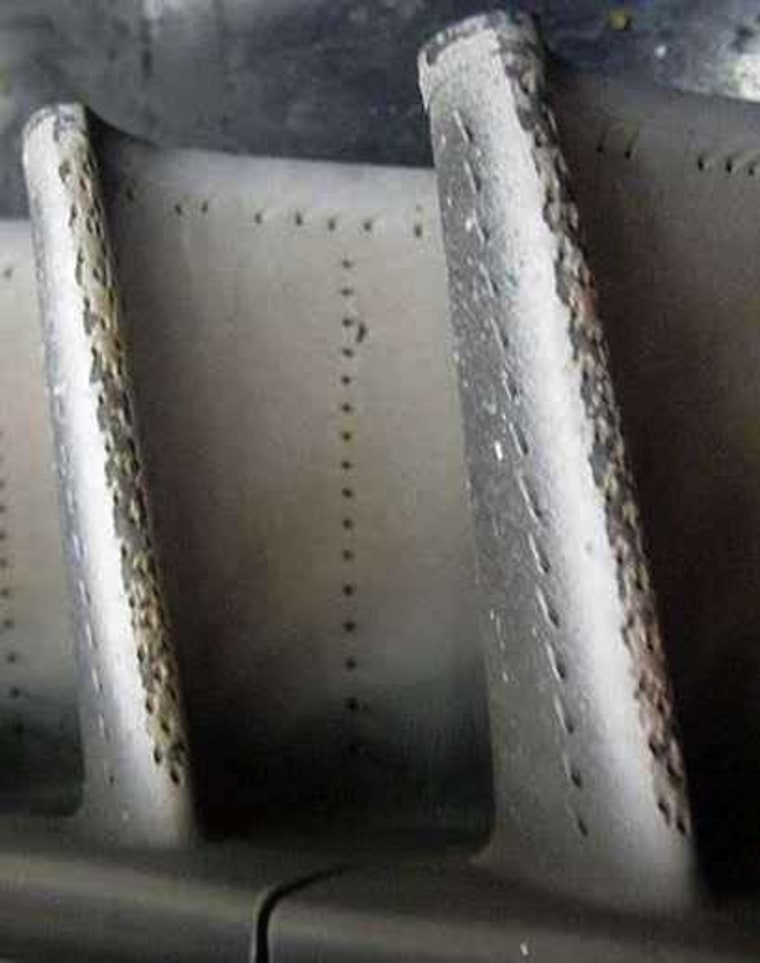
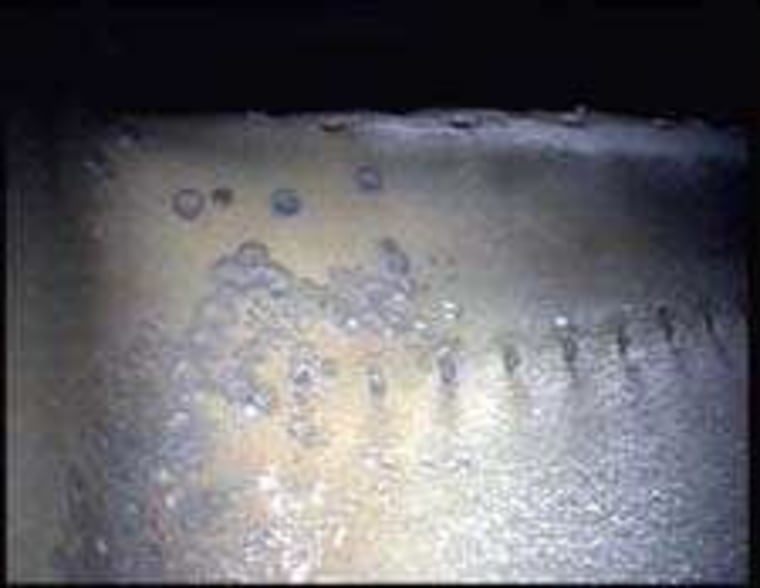
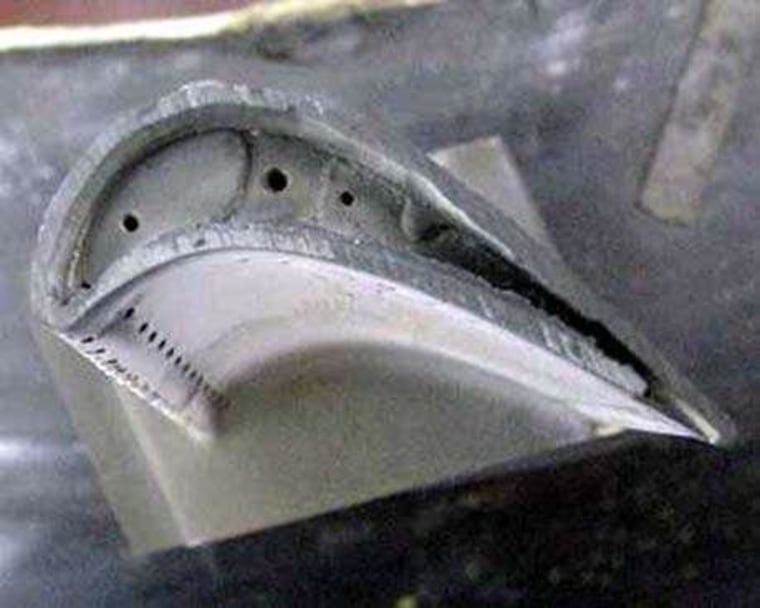
Seeing the shredded insides of a plane's jet engine after it flies through a volcanic ash cloud has got to be a big *gulp* moment. The fan blades of the engine are gouged (top), the cooling fins plugged with muck (middle), and insides lined with what is basically remelted, glassy lava (bottom, rind on inside of hollow portion). Analysis of data from the engine during flight confirmed that the engine was indeed above the 1832 °F (1000 °C) required to melt silicate rock.
Oddly, in-flight data on engine performance showed no adverse effects upon encountering the ash. In fact, it seemed to improve performance by polishing the engine's insides, allowing air and exhaust to flow more freely. This moderate "turbocharging" effect is short-lived, though, and will turn to disaster if there's too much ash in the air. It also drastically shortens an engine's lifespan (the one studied here needed an immediate overhaul).
It's a weird situation for another reason, too. The event in 2000 was seriously lucky break: the plane landed safely at its destination, and it was only after damage was found that investigators went back and found satellite images of an ash cloud emanating from Iceland's Hekla volcano.
Not much has changed. Authorities knew enough to keep flights grounded across Europe while ash spewed from Eyjafjallajokull, but the best way we have of figuring out precisely how much ash is up there (and where it is) is to fly planes around and fill their engines with gunk. The Finnish Air Force lent several F-18 fighter jets to the cause on Saturday, and this was their reward:
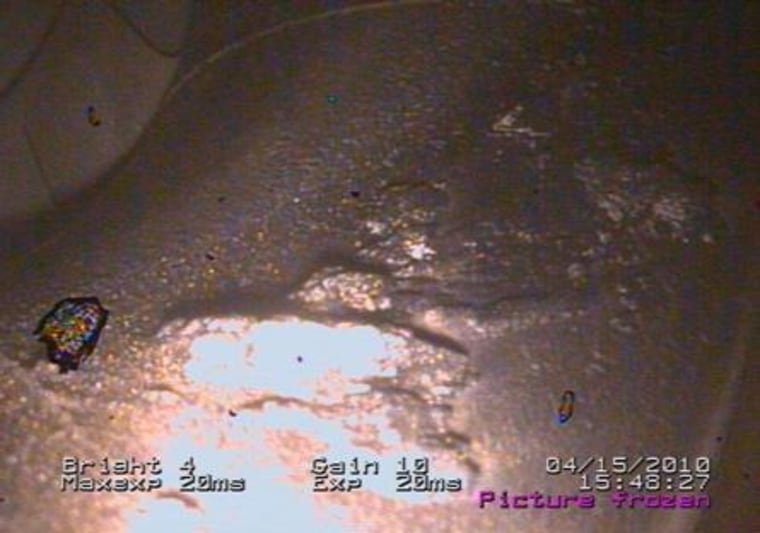
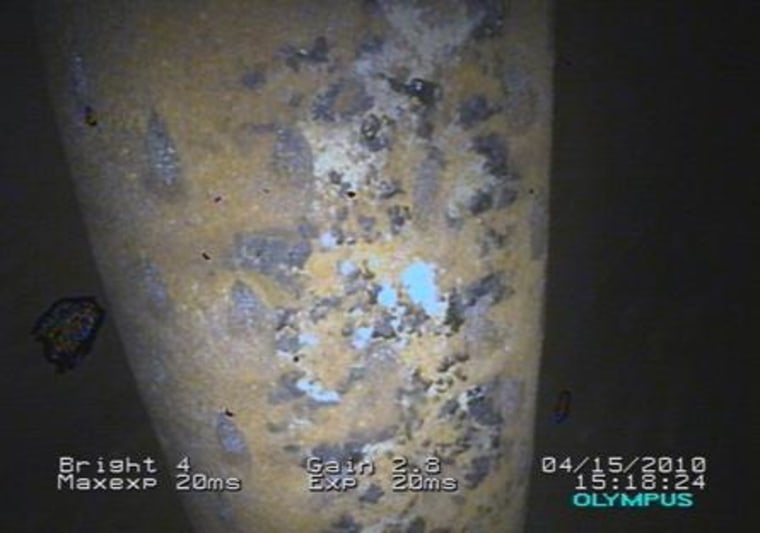
Commercial airlines are running test flights, too, and are agitating to get their fleets airborne as they hemorrhage cash. Such experimental flights are potentially expensive, dangerous ways to perform atmospheric testing, but when you're losing millions of dollars a day, perhaps the risk becomes worth it.